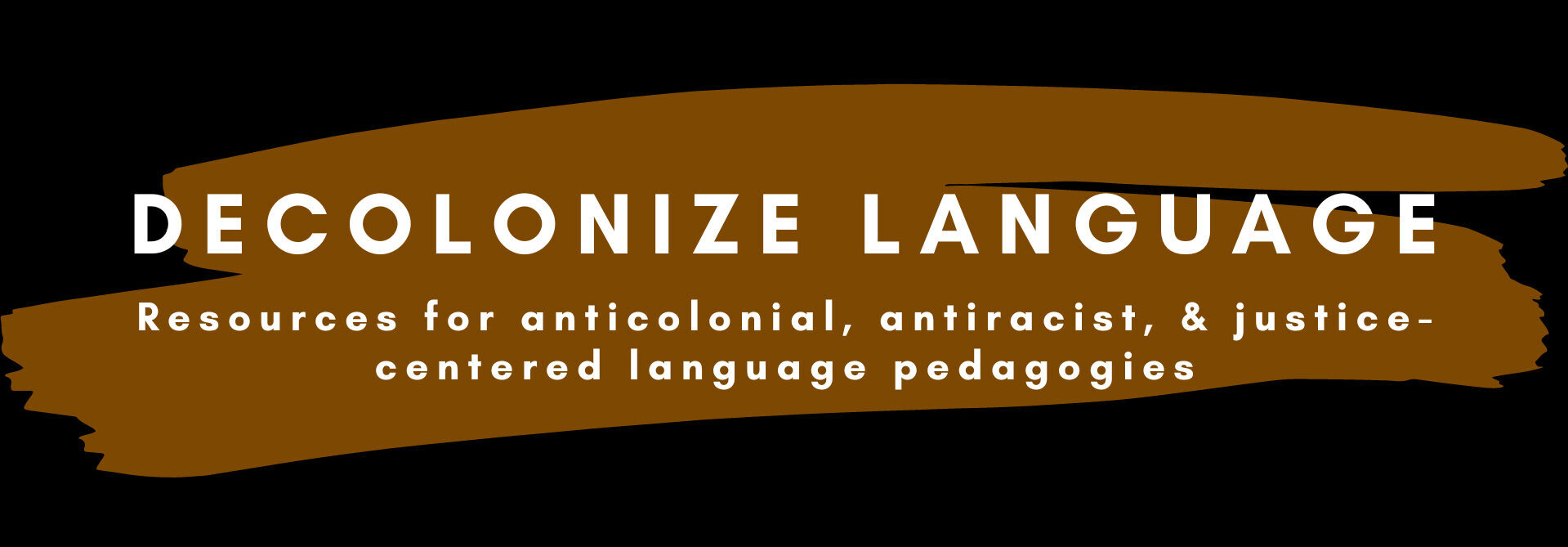
Setting the Stage for Critical Language Study
Challenging the Status Quo
As a language learner, I have always been drawn to critical content in the context of language learning—social issues that matter deeply but that are also messy and uncomfortable to wrestle with, marginalized perspectives that clearly show how language and power/powerlessness are inextricably linked, and innovative experiences and pedagogies that challenge traditional approaches to the discipline. Unfortunately, I didn’t often see those themes reflected in the curricula of the novice and lower intermediate courses in which I was enrolled. Such topics seemed to be reserved for specialized advanced courses at the university level, and when those topics did appear in lower level courses, they were approached in superficial ways. Perhaps we compared very generalized practices, products, and perspectives of the “target” culture with “our” culture (these always seemed to fit neatly within a Venn Diagram), or perhaps we learned superficial facts and tidbits about Spanish-speaking individuals and societies that the textbooks or teachers deemed important (again, neatly packaged cultural knowledge that could easily be regurgitated and assessed through traditional tests).
When I became a language teacher, I desperately wanted to challenge this status quo. Inspired by the work of various critical scholars, I wanted to enact a language class that challenged the very idea that proficiency could ever exist outside of the politicized nature of language. The more I began to fully develop this pedagogical approach, the more I came to realize that my class was veering away from the format of the introductory language classes that I had taken and the language learning experience that many of my students had come to expect based on their previous language courses. I came to realize that my students experienced a bit of shock, and probably some anxiety too, when they were asked to engage with the critical content that was a part of my class.
As an instructor, I had naively assumed that my students would understand my approach and would be along for the ride as we approached language study in a new way. While many students did eagerly hop on, many others approached with caution, while some others missed the ride completely.
Syllabus Statement
In this post, I wish to highlight one simple way in which I proactively set the stage for the type of course that my students would experience. I share this information in one of the first official pieces of communication that my students receive from me: the syllabus.
My ever-evolving statement that I use for my third-semester Spanish 201 course is below. At this level, most students in the course are at the novice-high/intermediate-low proficiency range.
Spanish, like many European languages (including English), has a history characterized by centuries of colonization and imperialistic domination. This history has often diminished, devalued, or erased the language varieties, cultures, and experiences of people who do not reflect Eurocentric identities. We still see those effects today. For example, certain dialects of Spanish spoken in Spain often enjoy more prestige than dialects spoken in, say, Puerto Rico or Mexico. And the literature, culture, and history of Spain are usually taught as their own separate courses, while the literatures, cultures, and histories of all Latin American countries are usually combined into the same course (check out UNCW’s Spanish course offerings as an example). In my attempt to flip the narrative and diversify the curriculum, this course will take an intentionally anti-colonial, anti-racist approach. That means that I will often supplement activities from the textbook with readings and other resources that more authentically reflect the racial, linguistic, and cultural diversity of Spanish-speaking people from around the world, with a special emphasis on people from historically underrepresented, minoritized groups. We will use these resources to reinforce linguistic elements like grammar and vocabulary. However, we will also critically examine the perspectives presented in the resources. At times, this will require the use of English, since you have not yet developed the skills in Spanish to engage in this level of dialogue. Also, this will often require us to push ourselves a little beyond our comfort zones in order to grapple with societal problems that matter deeply to us all but that are also highly complex and nuanced with no easy solutions. It is my goal for us to empathize with and celebrate a multitude of diverse lived experiences (including our own) and to learn some Spanish along the way. I hope that you will join me on this transformative journey!
In crafting this statement, I hoped to accomplish the following:
- openly and honestly acknowledge the politicized nature of language study.
- be upfront about my intentional efforts to take an anti-colonial, anti-racist approach to language learning.
- clearly explain the rationale for the topics and instructional resources that will be included in the course.
- take an initial step in helping the students feel “comfortable with the discomfort” of critical engagement.
- express reasons and expectations for using English.
- affirm that I, too, am willing to engage in critical self-reflection along with my students.
This process of clearly articulating the language learning philosophy that drives the course is important for students and instructors alike. For instructors who may not use a traditional syllabus (e.g., non-postsecondary), such a statement can be included as part of a course introduction or policy document, or it can be posted to a course website or LMS landing page.
Finally, it’s important to iterate that this is an ongoing process. Students need to be reminded of this course framework throughout the duration of the term (not just at the beginning of the class), and several low-stakes/no-stakes team-building activities should be incorporated throughout the term in order to build the relationships necessary to support the type of dialogue that is expected in the critical language class.
Student Response
So how did students respond? I copied below some of the recent feedback that I received from novice and intermediate-low Spanish classes. Although the format of the class was different from their expectations (based on previous experiences), these reflections show that students ultimately appreciated the approach and content of the course.
“I learned so much about the Latino identity, culture and history, and in doing so I feel like I learned more about myself.”
“I really appreciated the identity material in this course. It was nice to see some issues that I deal with as a diverse student brought to the attentions of my white pupils and then to be able to discuss these issues was extremely eye-opening to a lot of students in the class.”
“I really enjoyed this course. I like how Profe Randolph tied everything we were learning with social issues/racial issues, by doing so it made the class more memorable and interesting. I’ll always be able to remember about what we learned about even if I may forget the Spanish components (oops).”
Note: This post was originally published as a blog entry for the Center for Open Educational Resources and Language Learning (COERLL) on August 1, 2021.

